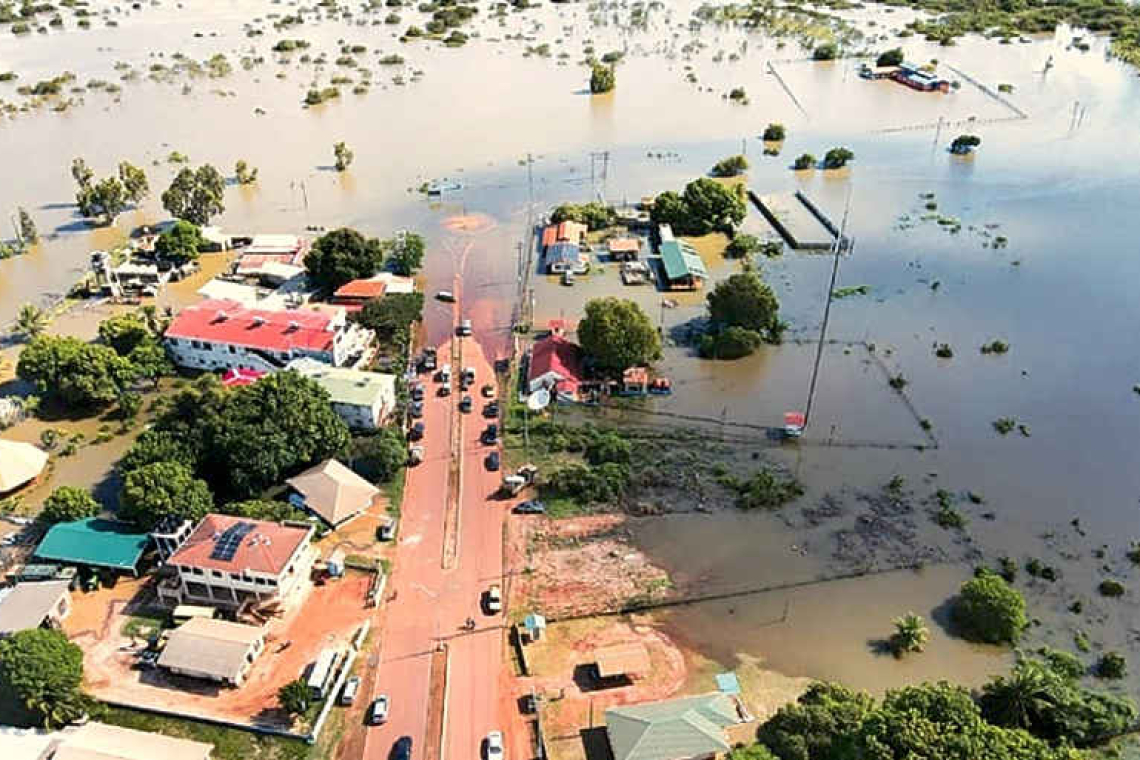GEORGETOWN, Guyana--Vulnerable to the effects of climate change and the ripple effect on the country’s agriculture sector, Guyana will be allocating some US $500 million for climate-proofing within the next three years.
Making this disclosure was Vice President (VP) Bharrat Jagdeo during a recent presentation at the Agri-Investment Forum and Expo.
Small island developing and low-lying coastal states face imminent threats of climate change and have been promised funding for climate adaptation. However, Jagdeo contended that this will never materialise on a level that is required to safeguard these nations, and as such, the government is making its own moves.
“We’re setting aside, maybe over the next three years, nearly US $500 million for just adaptation purposes, climate proofing … That’s the first big challenge here and we’re trying to deal with this, the adaptation,” he announced.
Last year, Guyana signed an historic, multi-year US $750 million agreement with Hess Corporation for the purchase of 37.5 million carbon credits. Guyana is, in fact, the first country to conclude the Architecture for REDD+ Transactions (ART) process of certifying its forest carbon.
As per the 10-year agreement, the purchase of 37.5 million credits at US $750 million would see Guyana earning some US $150 million in 2023. Some 15% of this sum was distributed to Indigenous villages; the remainder will be utilised for climate adaptation projects, such as sluices and canals, among others.
The vice president outlined, “That’s to start building more kokers to take the water out, shore up our conservancy dams, and build infrastructure like the Hope Canal that will allow us to better manage water. Our biggest vulnerability is managing water, both from sea and backlands, so that we can climate-proof our economy and our agriculture sector. This is a big part of our Low Carbon Development Strategy.”
Pointing out that the Hope Canal has proved instrumental in curtailing flooding in Georgetown and the East Coast of Demerara, Jagdeo outlined that a series of such structures will be built across the coast.
Going into negotiations at the United Nations Climate Change Conference or Conference of the Parties (COP), Jagdeo contended that Caribbean countries must take a unified, straightforward stance that does not reflect weakness. He reminded that climate change has dire impacts on agriculture – a sector that is being heavily pushed to obtain self-sufficiency.
“We have to have a more unified position at [the Caribbean Community – Ed.] CARICOM and we also have to have greater clarity … If we want agriculture to do well in the Region and we don’t control the biggest challenge to agriculture, which is climate problems, then we have to make sure that there is a global environment and policy that allows us to address this. That requires our negotiators, when they go to the COP meetings, to … doggedly stick to a narrow script and pursue it with great intensity,” he underscored.
Climate adaptation measures, a necessary part of Guyana’s sustainable development plans as the fallout from climate change continues to be felt by the most vulnerable countries, could cost Guyana over US $2 billion.
At the United Nations General Assembly last month, President Dr. Irfaan Ali called out developed countries over their failure to fulfil the US $100 billion per year pledge to assist developing nations’ fight against climate change.
He also noted the need for a collective reset of global relationships, which can aid in confronting the most pressing challenges of this era, including climate change, the energy and food crises as well as achieving sustainable development.
Guyana continues to pursue growth premised in a Low Carbon Development Strategy (LCDS 2030). Guyana is already poised to lead the Net Zero by 2050 Agenda, through its robust plans for energy security and renewable generation, while continuously recording increased economic prosperity.
The United Nations Global Roadmap sets out the target that the world must achieve net zero emissions by 2050. It involves balancing the amount of greenhouse gas produced and the amount removed from the atmosphere.
Despite being a carbon sink, the country lies several feet below sea level, and climate change is presenting grave concerns for the coastal population. The devastation brought on by flooding due to climate change and global warming will only worsen in the years to come, increasing flooding risks and other disastrous events if not properly addressed. ~ iNews Guyana ~







